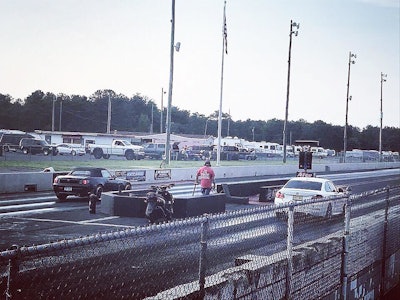
“Start your engines,” is a phrase that has made many hearts drum with anticipation. But, for supply chain veteran John Conte, it signals the start of a new drag race.
Conte first started drag racing when he was just 17 years old, when car culture thrived in the Philadelphia/South Jersey area. He explains that whenever he saw someone driving a BMW, Audi or Porsche, he would walk over and introduce himself and ask questions about the particular vehicle and a little bit about the person.
“I was always interested in cars that were low, loud and fast,” he says. “I loved how someone could take a modest car and make it faster than a traditionally more expensive vehicle. The competitive nature of the sport hooked me, but it’s all about continuous improvement and being better than you were the last time.”
He credits the sport for helping him become a hard worker and appreciate what he has. In addition, it inspired him to work harder to achieve these goals.
“When I would talk to the owners, I was able to hear stores of both success and failure, and how they bounced back from setbacks,” says Conte. “I have carried those stories with me through my personal and professional life.”
Despite what some may think about drag racing, it has allowed Conte to be innovative early on. When he first started the sport as a teenager, parts were expensive, so he figured out how to make other parts work within the car and network with other drivers to procure materials in a more cost-effective manner. He explains that barter and trading are key tools in the process, helping him gain skills that he would later use in the supply chain and logistics industry.
“From the parts side of things, it relates heavily to supply chain and logistics. Parts are ordered mostly JIT (just in time). This means the part is needed now and could be vital to the completion of a project or to get a vehicle repaired,” Conte explains. “Reverse logistics also plays a big role because the broken part will need to be returned for remanufacturing processes. Procurement and strategic sourcing are applied to make sure the best price is achieved, and data and analytics are utilized to make decisions and changes to optimize the vehicle and driver setup. Think about a telematics device, but instead of being used for route optimization, it’s optimizing for performance.”
But, just like the supply chain, drag race calls for continuous improvement and education. He suggests researching the different types of cars, races and events in addition to just observing in the stands. Conte also explains how what works for one vehicle may not work for another, so you have to learn the car to completely understand its technology and track.
“I am still learning. Technology changes so rapidly that each car and part are very different. For the basics, it took me one summer, but you need to practice often to get your rhythm down,” says Conte. “It’s an evolution, and you have to be willing to change with the technology or you will be left in the dust.”




















